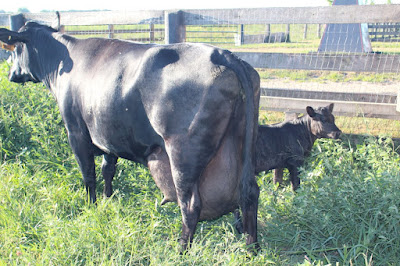Herbal Treatment of Mastitis (Udder Swelling) with Turmeric and Aloe vera
Mastitis continues to be recognized as one of the major disease problems concerning the dairy industry caused by many bacteria, which includes the coliform group, Streptococci, Staphylococci, Corynebacteria, Pasteurella, Mycoplasma, Leptospira, Yersinia, Mycobacteria, Pseudomonas, Serratia etc. In India, Staphylococcus, Streptococcus and E.coli generally cause 90-95% of all infections with Staphylococcus sp as the chief etiological agent of mastitis in cattle and buffaloes. Affected animal loses fifteen percent of production potential and affected quarter loses up to thirty percent milk producing capacity . Severe mastitis is usually treated systemically, although intramammary therapy will often be used adjunctively with antibiotics. The goal of antibacterial therapy is to attain effective concentrations of the drug at the site of infection . It was well established fact that repeated and improper use of chemicals enhance bacterial resistance thereby reducing the effective health care for mastitis.
Thus control of mastitis ailment remains a challenge attributed to multifactorial cause as well as cost of treatment . In developing countries, traditional veterinary medicine is particularly important because modern medicines or remedies for animal health care are either inaccessible or unaffordable by poor rural people.
 |
| Herbal treatment of Mastitis with Turmeric and Aloe vera |
After physical examination of the udder, the milk is completely drained from the udder and is washed with ordinary tap water and an ethno veterinary medicine paste of Aloe vera (250g), Turmeric (50g) and Calcium oxide (10g) is applied over the entire udder. The farmers are advised to go for six to seven applications daily by making fresh preparation every time for five days. The affected cows were also fed with 2 lemon fruits twice daily.
The select parameters (pH, SCC, EC) in the animals with mastitis became normal within 6-7 days of treatment. The milk production returned to near normal to the pre-mastitis level. Hence, the mastitis can be efficiently managed with this formulation. The intervention impact analysis showed 18 to 49% reduction in antibiotic residues in the milk. The combination [Aloe vera (L.) Burm. F, Curcuma longa L. and calcium hydroxide] acts synergistically and provides effective cure in clinical mastitis owing to its broad spectrum antimicrobial, anti-inflammatory and immunomodulatory activities
As per the texts of Ayurveda, mastitis is known as Sthanavidhradi, a disease of pitta origin, the drugs used in this formulation (Aloe vera, Curcuma longa and Calcium hydroxide) is potent pitta shamaka (Pacifies Pitta humour). The formulation possesses Krimighna (antimicrobial), Vranashodaka (wound cleanser), Vranaropaka (wound healing), Shothahara (anti-inflammatory) and Srotoshodaka (channel cleanser) properties. Hence, mastitis can be efficiently managed with this formulation. The antimicrobial activity of Aloe vera is attributed to the anthraquinones (aloin and emodin), flavonoids, tannins (active against MRSA), saponins, p-coumaric acid, ascorbic acid, pyrocatechol and cinnamic acid. Alkaloids, tannins, phenolics, terpenoids, phytosterols, saponins, flavonoids, glycosides, fatty acids such as palmitoleic acid and α-turmerone in fixed oils of Curcuma longa also possess antimicrobial activity against wide range of bacteria.
The anti-inflammatory activity of Aloe vera is reported to be due to Brady kinase which decreases vascular permeability, neutrophil migration, and leukocyte adhesion and reduces edema formation. It is also found to decrease the production of TNFα, inhibit PGF2α and TB4. Curcumin, the active principle of Curcuma longa is reported to inhibit NF-κB which in turn decreases TNF-α, superoxides, COX-2, iNOS and NO. It inhibits LOX pathway and decreases the formation of leukotriene. Calcium hydroxide is known to possess anti-inflammatory action and reduces edema formation. Thus all the three ingredients in the formulation act at various steps in the inflammatory pathway and synergistically produce anti-inflammatory effect. Polysaccharides present in Aloe vera are rich in mannose and act as biological response modifier by targeting antigen presenting cell and cytokine cascade. Acemannan increases TNFα, IL-1B, IFN γ, IL-2 and IL-6; aleoride increases NFκB activation and stimulate macrophages which in turn increase nitric oxide production and other cytokines responsible for immunomodulation. Curcumin also possesses immunomodulatory and antioxidant activity
